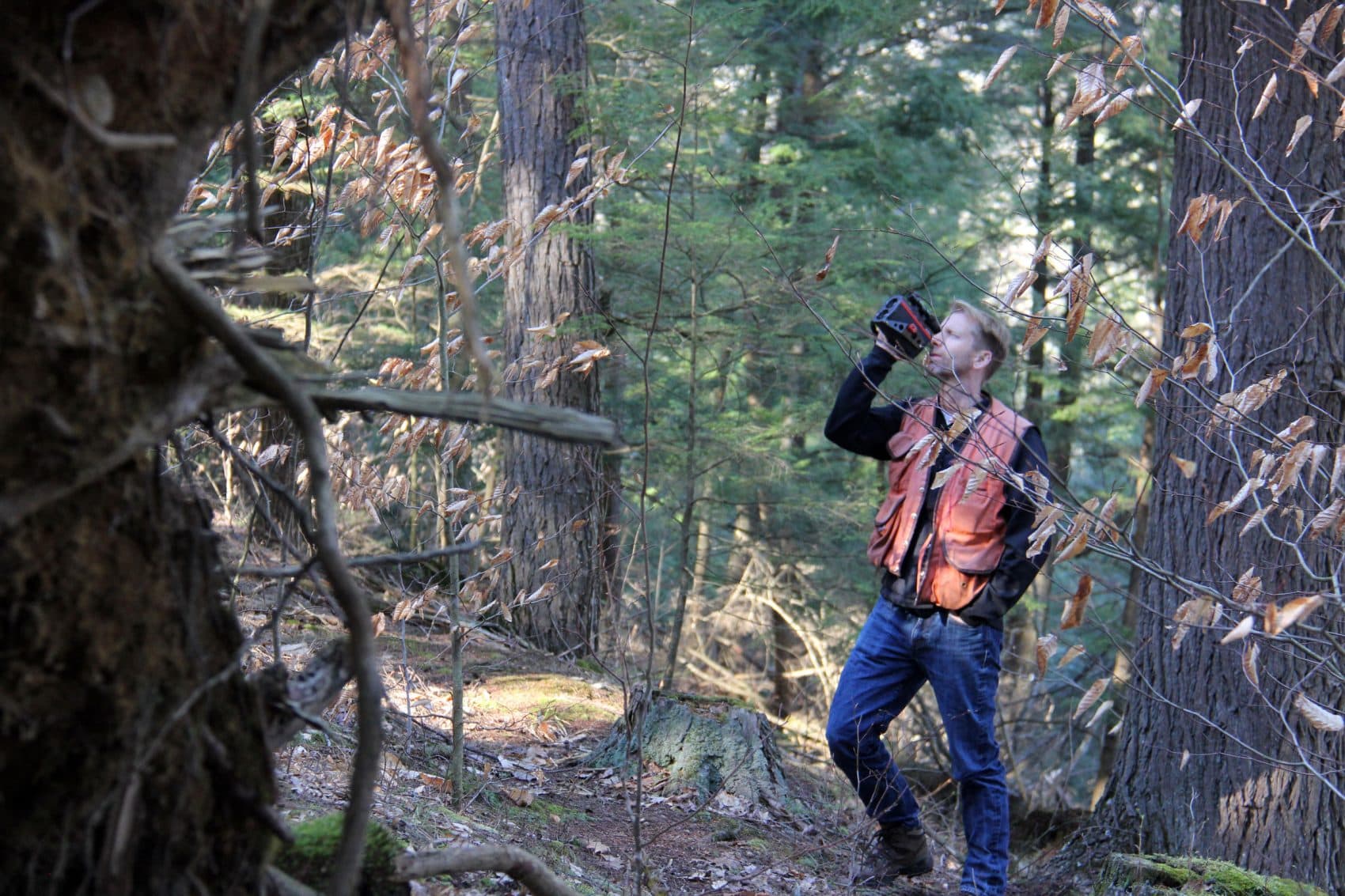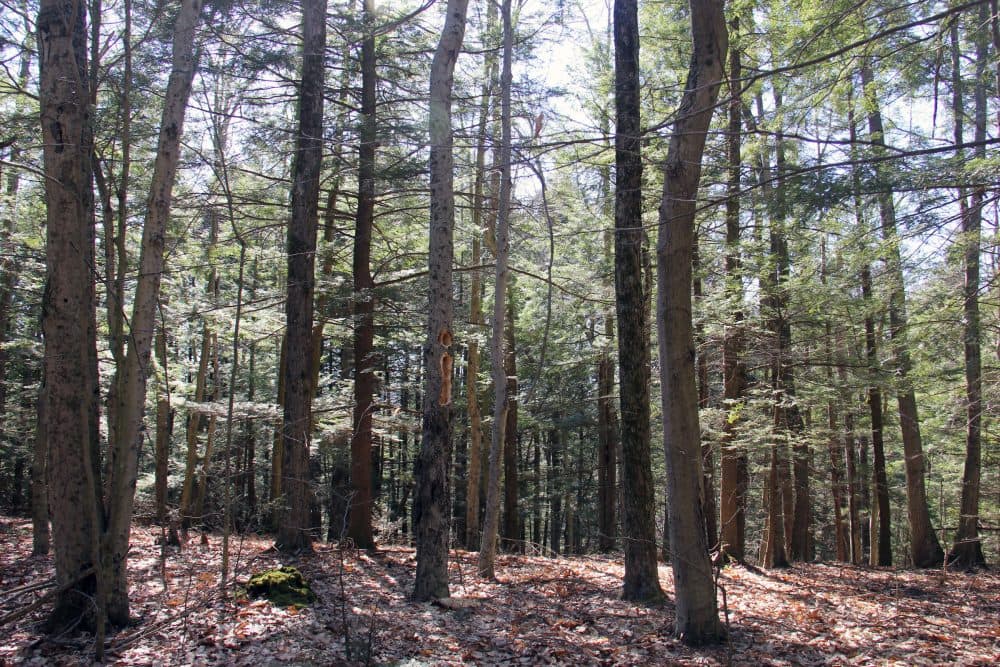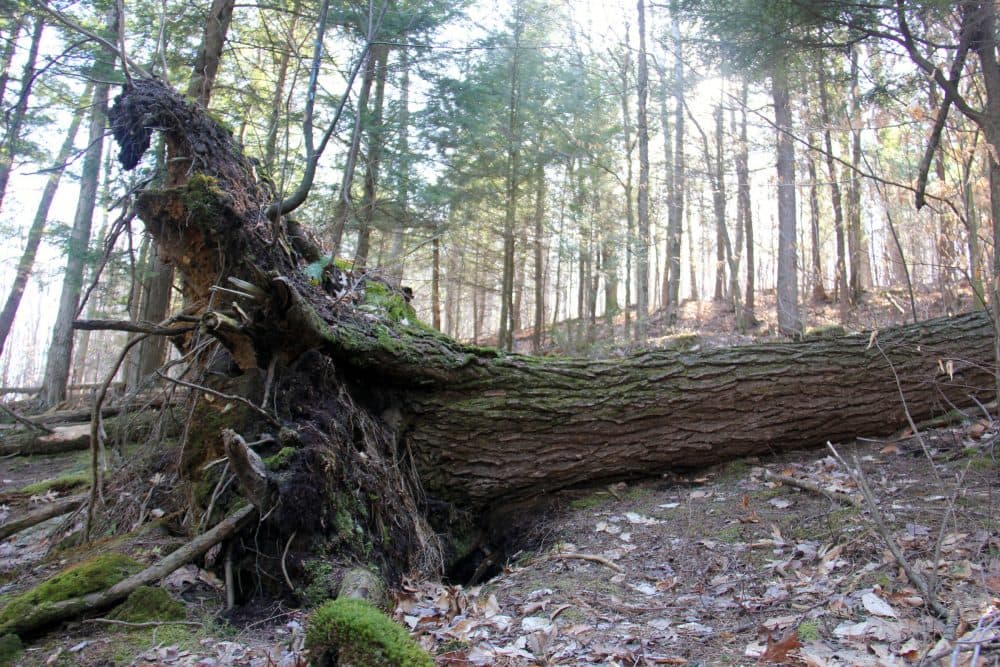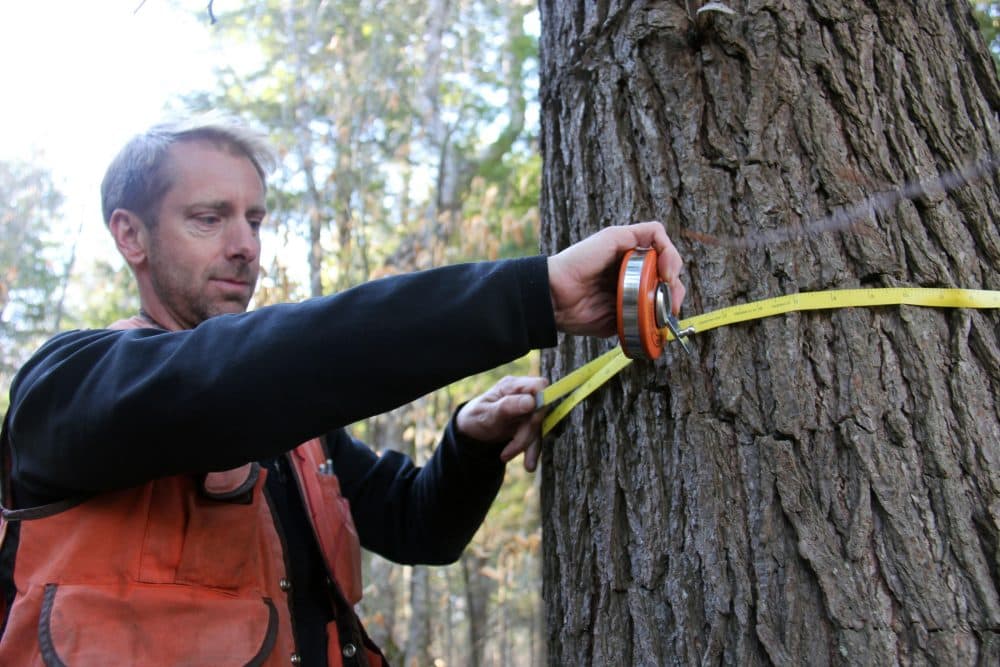Advertisement
Vt. Scientists Boost Biodiversity By Guiding Middle-Aged Forests To Mimic Ancient Ones
Resume
In the northeast U.S., there is less than 1 percent of old growth forest left. For a forest to be considered "old growth," it must grow largely undisturbed, usually for several centuries.
A new University of Vermont study finds that harvesting trees in a way that mimics old growth forests not only restores critical habitat, but also stores a surprising amount of carbon.
UVM forest ecologist Bill Keeton wanted to see if he could take a "middle-aged" New England forest and "nudge" the forest ecosystem into old growth conditions.
Aging The Forest
It's a pleasantly sunny afternoon at the 500-acre University of Vermont Jericho Research Forest in northern Vermont, and Keeton is literally walking me through his 15-year experiment.
"[These forests are] a pretty good example of really the broader New England landscape. So everything that you're seeing here, 150 years ago was just open pastureland," Keeton says.
He says the regeneration of forests on this research plot is basically a microcosm of the recovery that happened across that New England landscape.
"This study is really about how we take this recovering secondary forests, forests that have recovered since the 19th century, and kind of nudge them along toward older, more architecturally complex condition," says Keeton, who conducted the study along with UVM graduate student Sarah Ford.

Using tree shears and backhoes, the researchers have engineered several plots of this middle-aged forest to look much more like an old growth forest.
But before visiting that plot, Keeton takes me to the control plot. It's 5 acres of untouched trees; the idea here is to measure how the forest would have grown if scientists hadn't tinkered with it.
"All the trees are roughly the same age, there's a single layer in canopy, there aren't a lot of interesting habitat features like dead and dying trees that are important for wildlife," he says. "It's just very uniform, homogeneous."
But about a 10-minute walk away is a plot that's been engineered to mimic old growth forest conditions. Just like the control plot, the trees are about 150 years old, but this forest looks noticeably different.
"So you're coming into one of the structural complexity enhancement units, and I want to see if you notice any changes as we walk in. Anything look different to you?" Keeton asks.
I point to a large downed tree, roughly 60 feet long, whose roots have tipped up into the air. Forgetting its scientific name, I call it "an overturned, giant stump."

"This is a tip-up mound. So we made this," Keeton explains, pointing out all the different habitat niches in the roots and in the cave-like ditch left underneath.
Tree falls like this would happen naturally over time, usually from wind or storms, but in this case the researchers pulled over the tree using a cable.
"We needed to take it down to free up growing space for other trees, like that one right there, that nice big one that we're trying to crown release, so that one can grow to a really big size," says Keeton.
"And in doing this we create this great down log, which is habitat now for amphibians, small mammals, invertebrates."
The researchers also girdled some tree limbs to create dead branch snags, which also provide key animal habitat. Other trees were selectively harvested to create gaps in the canopy, letting in sunlight to the forest floor.
And, it worked.
Old Trees Boosts New Biodiversity
The "old growth" engineering technique succeeded in creating diverse habitats. But the kicker, Keeton says, is that it has also allowed the forest to store a significant amount of carbon, much more than several other conventional tree selection harvesting techniques. That's key to fighting climate change.
Now, forests that are left alone — with no trees harvested — store the most carbon. But Keeton's study is finding that it is possible to manage the forest to maximize carbon capture, and still keep it a working forest.
"This greater amount of carbon storage as compared to the conventional treatments was actually a combination of having left more trees behind in the first place, and growth rates that were actually 10 percent higher in this treatment as compared to the conventional harvest," Keeton says. "And that was really surprising."
Keeton says after 10 years, the old growth forest management plot stored nearly as much carbon as the unlogged control forest. It came within 16 percent of carbon storage in the unharvested plots.
"This does not just have to be a science project. This is a potentially very practical tool that many forest owners could use," says Fred Clark, the director of the national Forest Stewards Guild.
Clark says Keeton's work shows landowners who are interested in managing their forests for habitat and biodiversity that they can do that and still make some income from the land.
That's income from harvesting select trees, and from a relatively new income source:
"We have forests, primarily large-forest ownerships throughout the country, are now taking advantage of the California carbon market by developing and registering what are called carbon offset projects," Clark says.

It’s not just California. Quebec also has a market where forest landowners can sell carbon credits. Typically businesses buy these credits to make up for their pollution emissions that go beyond what they're allowed to pollute by state or regional laws. These carbon markets are still in their infancy.
Back in the woods in Jericho, Vermont, Keeton says he was surprised that the old growth management technique actually brought in decent revenue. In fact, the technique made a bit more money than harvesting trees in a group selection, but not as much money as individually selecting and harvesting all large-diameter trees.
"So that was promising to us. Now in absolute terms, again, we harvested about 60 to 80 percent less volume. This is not going to maximize your commercial revenue, it's just not," Keeton says. "But in the right situation, for the right type of landowner, depending on their objectives, it might be something that they could consider."
And if carbon markets continue to grow in the future, that would add even more financial incentive.
This story is a production of the New England News Collaborative and originally aired on Vermont Public Radio.
This segment aired on April 26, 2017.